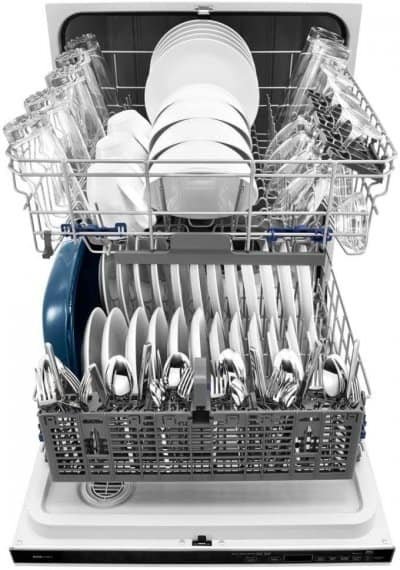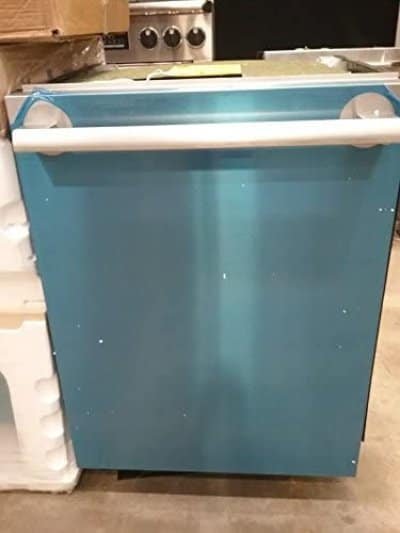Glassware adds elegance and beauty to our dining experiences. However, over time, dishwasher etching can occur, leaving unsightly marks on our favorite glasses. Dishwasher etching is the result of repeated exposure to harsh dishwasher detergents and high temperatures, which can cause a chemical reaction that etches the glass surface. In this article, we will explore effective methods to remove dishwasher etching and restore the shine and clarity to your glassware.
Table of Contents
Understanding Dishwasher Etching
Dishwasher etching occurs when the surface of glassware becomes permanently damaged due to the corrosive effects of dishwasher detergents. It results in a cloudy or frosted appearance, making the glassware appear dull and worn out. The high alkalinity and heat in dishwashers accelerate the etching process, especially when combined with hard water minerals.
Identifying Signs of Dishwasher Etching
To determine if your glassware has been affected by dishwasher etching, look for the following signs:
- Cloudy or frosted appearance
- Dull and lackluster shine
- Noticeable scratches or pitting on the surface
- Inability to remove residue or water spots despite thorough cleaning
Preparing the Glassware for Cleaning
Before attempting any cleaning methods, it is essential to prepare the glassware properly. Follow these steps:
- Rinse the glassware with warm water to remove any loose debris or residue.
- Fill a clean sink or basin with warm water and a mild dish soap.
- Gently wash the glassware using a soft sponge or cloth to remove any surface dirt or grime.
- Rinse the glassware thoroughly with warm water to remove the soap residue.

Method 1: Vinegar Soak
Vinegar is a versatile household ingredient that can effectively remove dishwasher etching from glassware. Follow these steps:
- Fill a container large enough to submerge the glassware with equal parts white vinegar and warm water.
- Place the affected glassware into the vinegar solution and let it soak for at least 30 minutes.
- After soaking, gently scrub the glassware with a soft sponge or brush to remove any remaining etching.
- Rinse the glassware thoroughly with warm water and dry it with a lint-free cloth.
Method 2: Baking Soda Paste
Baking soda is another powerful cleaning agent that can help eliminate dishwasher etching. Here’s how to use it:
- Create a paste by mixing equal parts baking soda and water.
- Apply the baking soda paste to the etched areas of the glassware.
- Gently rub the paste onto the glassware using circular motions.
- Rinse the glassware with warm water and dry it with a lint-free cloth.
Method 3: Lemon Juice Treatment
Lemon juice contains natural acids that can aid in the removal of dishwasher etching. Follow these steps:
- Squeeze fresh lemon juice into a container.
- Dip a soft cloth or sponge into the lemon juice.
- Rub the lemon juice onto the etched areas of the glassware.
- Allow the lemon juice to sit on the glassware for a few minutes.
- Rinse the glassware with warm water and dry it thoroughly.
Method 4: Toothpaste Rub
Toothpaste, known for its abrasive properties, can also be used to tackle dishwasher etching. Here’s what you need to do:
- Apply a small amount of non-gel toothpaste to a soft cloth.
- Gently rub the toothpaste onto the etched areas of the glassware.
- Continue rubbing in circular motions for a few minutes.
- Rinse the glassware with warm water and dry it with a lint-free cloth.
Preventing Dishwasher Etching
While it’s essential to know how to remove dishwasher etching, prevention is key to maintaining the beauty of your glassware. Here are some preventive measures to consider:
- Use a mild dishwasher detergent specifically formulated for glassware.
- Avoid using the high-temperature setting on your dishwasher.
- Ensure your dishwasher’s rinse aid compartment is filled with a suitable product.
- Consider hand-washing delicate or valuable glassware.

Can I use other types of vinegar instead of white vinegar for the vinegar soak method?
Yes, you can use other types of vinegar, such as apple cider vinegar or white wine vinegar. However, white vinegar is the most commonly used and readily available option.
How often should I clean my glassware to prevent dishwasher etching?
Regular cleaning is essential to prevent the build-up of dishwasher residue. Aim to clean your glassware after each use or at least once a week, depending on your usage.
Can I use these methods on crystal glassware?
While these methods are generally safe for regular glassware, exercise caution when cleaning delicate crystal glassware. It is recommended to consult the manufacturer’s guidelines or consider professional cleaning for valuable crystal pieces.
Are there any commercial products specifically designed to remove dishwasher etching?
Yes, there are commercial products available that are specifically formulated to remove dishwasher etching. Look for products labeled as “glassware rejuvenators” or “glassware etching removers” and follow the instructions provided.
Is it possible to reverse severe dishwasher etching?
In some cases, severe dishwasher etching may be irreversible. However, the methods described in this article can help improve the appearance of mild to moderate etching. If the etching is severe, professional glass restoration services may be necessary.
Conclusion
Dishwasher etching can be frustrating, but with the right techniques, you can restore the brilliance of your glassware. Whether you choose vinegar, baking soda, lemon juice, or toothpaste, remember to follow the proper cleaning methods. Additionally, taking preventive measures will help prolong the lifespan of your glassware and keep it looking its best for years to come.

